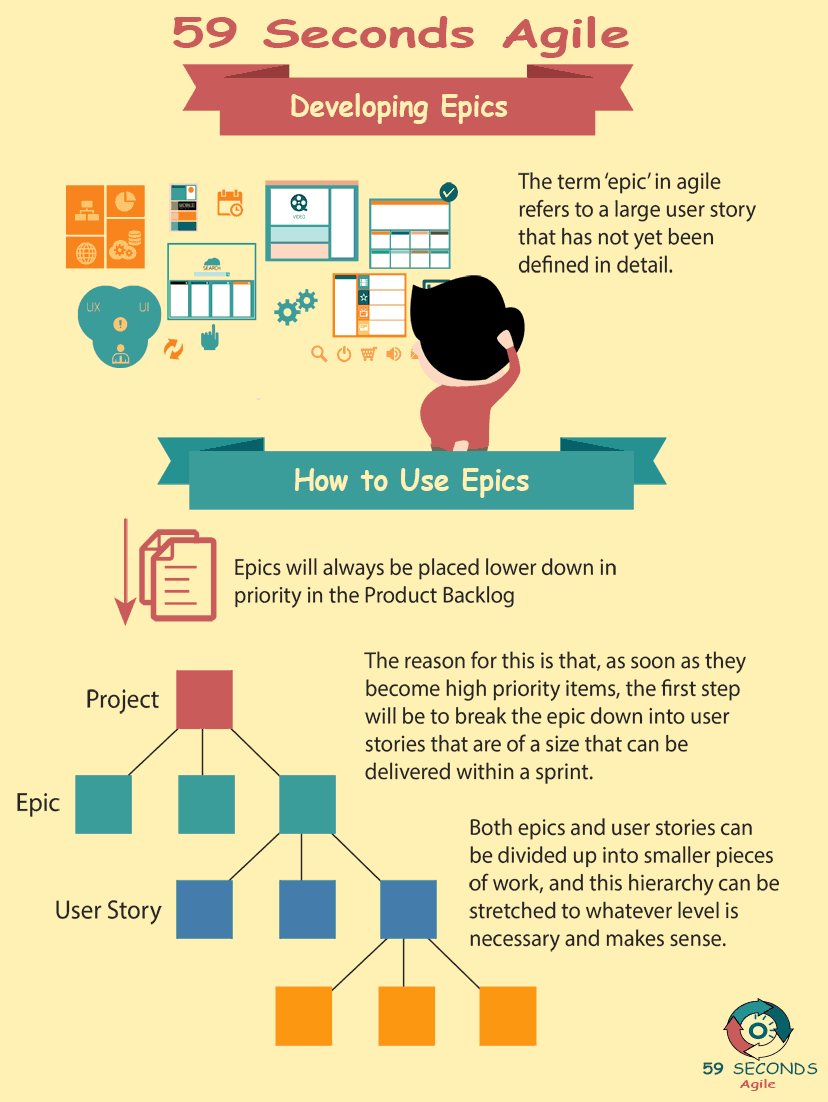This article looks to discuss Epic Feature User Story Creation and Personas. This article is part 3 of an 8 section discussion on developing Epics and includes training videos. Part 1 is available by following this link.
Epic Feature User Story
A 59 Seconds Agile Training Video
Continue to Part 4 Below
Epic Feature User Story
A 59 Seconds Agile Article
This article provides an ‘Introduction to the Developing Agile Epics and personas’ and looks to discuss what an Epic Is and what a Persona is within an Agile project.
Epic Feature User Story: What is an Epic?
Epics, themes and user stories are agile artefacts used to classify the work for a project. Some organisations consider bigger customer requests, features or requirements as an epic. However, how an organisation defines “bigger” work items vary from organisation to organisation.
For complex projects, where there are multiple focus areas to be covered by many scrum teams, the project management team creates epics for different focus areas and all the requirements in the form of user stories are mapped onto the respective focus area of the epic. A common standard used suggests that if the user story is too large to be completed within a single sprint, then it should be considered as an Epic.
Epic Feature User Story: Splitting Epics into User Stories
The Epic should then be split into smaller user stories and each story attached to the Epic. Sometimes an epic can span over more than one project, if multiple projects are included on the Scrum board to which the epic belongs.
Epics, unlike sprints often change in scope as they are delivered over a set of sprints and Releases. Releases are different from epics as they are a point in time where the project is released to the customer. Through development and customer feedback, the team learns more about epics.
Continue Reading —> Next
Developing Agile Epics
A 59 Seconds Agile Video Animation
User Stories Applied
A 59 Seconds Agile Book Review
User Stories Applied by Mike Cohn is one of our favourite books on Agile User Stories. The book starts with an overview into user stories, and details what a user story is and the different aspects of them. He then discusses how to go about writing a user story, and provides details of the INVEST criteria that can be used to determine if the story is meeting all of its objectives. Next Mike gives an in depth discussion of who user stories are written for and where to begin when gathering the details for them. The book then discusses acceptance testing user stories, including how to go about specifying these criteria and the responsibilities of the development team and customers during this process.
Continue Reading —> Next
Developing Agile Epics
A 59 Seconds Agile Infographic

